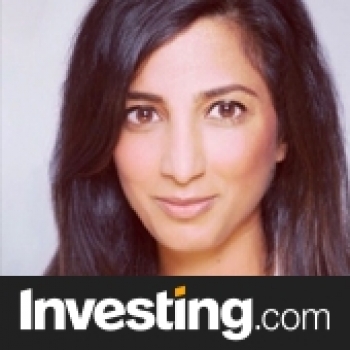
- All Instrument Types
- Indices
- Equities
- ETFs
- Funds
- Commodities
- Currencies
- Crypto
- Bonds
- Certificates
Please try another search

3 Top-Ranked Dividend Stocks: A Smarter Way to Boost Your Retirement Income - April 08, 2020

Here's an eye-opening statistic: older Americans are more afraid of running out of money than of death itself.
Also, retirees who have constructed a nest egg have valid justifications to be concerned, since the traditional ways to plan for retirement may mean income can no longer cover expenses. Some retirees are now tapping their principal to make a decent living, pressed for time between decreasing investment balances and longer life expectancies.
In today's economic environment, traditional income investments are not working.
Years ago, investors at or close to retirement could put money into fixed-income assets and depend on appealing yields to generate consistent, solid pay streams to fund a comfortable retirement. 10-year Treasury bond rates in the late 1990s floated around 6.50%, but unfortunately, those days of being able to exclusively rely on Treasury yields to fund retirement income are over.
While this yield reduction may not seem drastic, it adds up: for a $1 million investment in 10-year Treasuries, the rate drop means a difference in yield of more than $1 million.
Today's retirees are getting hit hard by reduced bond yields - and the Social Security picture isn't too rosy either. Right now and for the near future, Social Security benefits are still being paid, but it has been estimated that the Social Security funds will be depleted as soon as 2035.
So what can retirees do? You could dramatically reduce your expenses, and go out on a limb hoping your Social Security benefits don't diminish. On the other hand, you could opt for an alternative investment that gives a steady, higher-rate income stream to supplant lessening bond yields.
Invest in Dividend Stocks
Dividend-paying stocks from low-risk, high-quality companies are a smart way to generate steady and reliable attractive income streams to replace current low risk, low yielding Treasury and bond options.
For example, AT&T (NYSE:T) and Coca-Cola (NYSE:KO) are income stocks with attractive dividend yields of 3% or better. Look for stocks like this that have paid steady, increasing dividends for years (or decades), and have not cut their dividends even during recessions.
One approach to recognizing appropriate stocks is to look for companies with an average dividend yield of 3% and positive average annual dividend growth. Numerous stocks hike dividends over time, counterbalancing inflation risks.
Here are three dividend-paying stocks retirees should consider for their nest egg portfolio.
Costamare (CMRE) is currently shelling out a dividend of $0.1 per share, with a dividend yield of 9.41%. This compares to the Transportation - Shipping industry's yield of 0% and the S&P 500's yield of 2.31%. In terms of dividend growth, the company's current annualized dividend of $0.4 is flat compared to last year.
Campbell Soup (CPB) is paying out a dividend of 0.35 per share at the moment, with a dividend yield of 3% compared to the Food - Miscellaneous industry's yield of 0.38% and the S&P 500's yield. Taking a look at the company's dividend growth, its current annualized dividend of $1.4 is flat compared to last year.
Currently paying a dividend of 0.28 per share, Douglas Emmett (DEI) has a dividend yield of 3.73%. This is compared to the REIT and Equity Trust - Other industry's yield of 6.01% and the S&P 500's current yield. Looking at dividend growth, the company's current annualized dividend of $1.12 is up 7.69% from last year.
But aren't stocks generally more risky than bonds?
Overall, that is true. But stocks are a broad class, and you can reduce the risks significantly by selecting high-quality dividend stocks that can generate regular, predictable income and can also decrease the volatility of your portfolio compared to the overall stock market.
A silver lining to owning dividend stocks for your retirement portfolio is that many companies, especially blue chip stocks, increase their dividends over time, helping offset the effects of inflation on your potential retirement income.
Thinking about dividend-focused mutual funds or ETFs? Watch out for fees.
If you're thinking, "I want to invest in a dividend-focused ETF or mutual fund," make sure to do your homework. It's important to know that some mutual funds and specialized ETFs charge high fees, which may diminish your dividend gains or income and thwart the overall objective of this investment strategy. If you do want to invest in fund, research well to identify the best-quality dividend funds with the least charges.
Bottom Line
Whether you select high-quality, low-fee funds or stocks, seeking the steady income of dividend-paying equities can potentially offer you a path to a better and more stress-free retirement.
Generating income is just one aspect of planning for a comfortable retirement.
To learn more ways to maximize your assets - and avoid pitfalls that could jeopardize your financial security - download our free report:
Will You Retire a Multi-Millionaire? 7 Things You Can Do Now
This helpful guide offers our viewpoints about strategic retirement investment planning, based on decades of experience helping our clients prepare for financial security during their golden years. Get Your FREE Guide Now
Costamare Inc. (CMRE): Free Stock Analysis Report
Campbell Soup Company (NYSE:CPB): Free Stock Analysis Report
Douglas Emmett, Inc. (DEI): Free Stock Analysis Report
To read this article on Zacks.com click here.
Zacks Investment Research
Related Articles

Palantir remains highly valued with a 460x P/E ratio and a 42.5x P/B ratio, far above its peers. The stock's beta of 2.81 signals high volatility, meaning sharp moves in both...

The S&P 500 had started to clear resistance, posting new all-time highs before sellers struck with a vengeance. The selling was bad, similar to that seen in December, which...

Myself and others have highlighted how European Equities have been breaking out to new all-time highs on the back of bullish factors such as cheap valuations, monetary tailwinds,...
Are you sure you want to block %USER_NAME%?
By doing so, you and %USER_NAME% will not be able to see any of each other's Investing.com's posts.
%USER_NAME% was successfully added to your Block List
Since you’ve just unblocked this person, you must wait 48 hours before renewing the block.
I feel that this comment is:
Thank You!
Your report has been sent to our moderators for review





Add a Comment
We encourage you to use comments to engage with other users, share your perspective and ask questions of authors and each other. However, in order to maintain the high level of discourse we’ve all come to value and expect, please keep the following criteria in mind:
Enrich the conversation, don’t trash it.
Stay focused and on track. Only post material that’s relevant to the topic being discussed.
Be respectful. Even negative opinions can be framed positively and diplomatically. Avoid profanity, slander or personal attacks directed at an author or another user. Racism, sexism and other forms of discrimination will not be tolerated.
Perpetrators of spam or abuse will be deleted from the site and prohibited from future registration at Investing.com’s discretion.